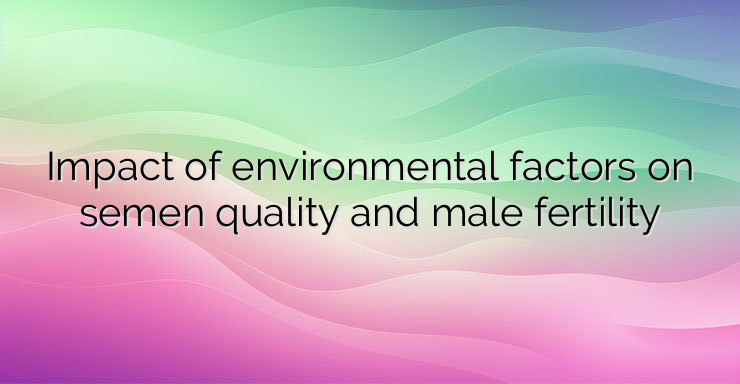Idiopathic (unknown cause) infertility is the most common individual diagnosis of male infertility, accounting for nearly 44% of cases. Studies conducted over the past half century have consistently demonstrated a decline in male fertility that is not fully explained by obesity, known genetic causes, or changes in diet and lifestyle alone. Synthetic chemicals are becoming increasingly present in the environment. While some do not cause problems, many chemicals are known to disrupt the hypothalamic-pituitary-gonadal axis and disrupt spermatogenesis. The sperm count of men worldwide has more than halved since 1973, according to a recent study. The likely cause of this is the toxic chemicals found in plastics and carbon-based energy sources. Building on a previous study from 2017, researchers observed significant declines in men’s sperm counts in 53 countries on six continents, sparking fears that the world may be facing a global fertility crisis. And it looks like the crisis will get worse, as between 1972 and 2000 the concentration of sperm in semen fell by 1.16%, but since the turn of the new century it has fallen by 2.62% – over twice more. Sperm count is fundamental to male fertility. However, a high sperm count alone does not guarantee fertility. The sperm must also be healthy and motile to have a good enough chance of successful conception. This is another area where male fertility is also affected because another study published in 2019 found that sperm motility (their ability to swim and move) decreased by 10% over the previous 16 years. The reasons for this are unknown, but a growing body of research points to endocrine-disrupting chemicals that can affect hormones and affect reproductive ability. This includes phthalates, which are widely found in items or preparations used every day, such as plastics, soap, hairspray, lubricating oils and vinyl flooring. Microplastics � which often contain these phthalates � are released when plastic breaks down, whether that happens in the ocean or in a person’s home, meaning that phthalates are in the very water we drink and in the air we breathe. Lifestyle factors such as diet and smoking can also play a role in a man’s reduced fertility. In recent years, microplastics have been found in human breast milk, placentas, lungs and blood. Another possible cause of the crisis could be air pollution, especially from herbicides, pesticides and carbon-based energy sources. The main air pollutants that affect human health areare fine particulate matter, volatile organic compounds, ozone, nitrogen oxides, sulfur dioxide, carbon monoxide, polycyclic aromatic hydrocarbons (PAHs), and radiation, such as X-ray exposure. Dust particles in the air in the form of small liquid droplets or solid particles can be inhaled and potentially cause serious health effects. Adverse environmental factors have a significant impact on sperm quality (resulting in reduced sperm concentration) and total sperm count. But these factors also affect sperm motility, viability and abnormal morphology, sperm DNA fragmentation, which ultimately causes male infertility. References: 1. The Cool Down. Sperm counts are plummeting worldwide, new study shows 2. Environmental Sciences Europe (ESEU). Impact of environmental factors on human semen quality and male fertility: a narrative review 3. National Center for Biotechnology Information (NCBI). Impact of environmental toxin exposure on male fertility potential


Leave a Reply